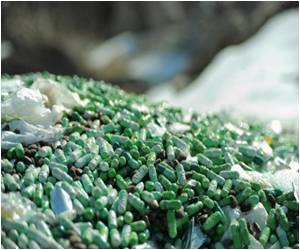A recent study says that higher doses of Vitamin D may be most beneficial in reducing bone fractures in older adults.

"Taking between 800 IUs and 2,000 IUs of vitamin D per day significantly reduced the risk of most fractures, including hip, wrist and forearm in both men and women age 65 and older," said Dawson-Hughes, the study's senior author. "Importantly, we saw there was no benefit to taking Vitamin D supplements in doses below 800 IUs per day for fracture prevention."
Dawson-Hughes and colleagues analyzed each participant's vitamin D supplementation within and independent of the study protocol, controlling for age, vitamin D blood levels at baseline, additional calcium supplementation and whether the person lived independently or under medical care.
"Evaluation of individual-level data is the gold-standard of meta-analysis," said lead author Heike Bischoff-Ferrari, MD, D.Ph., director of the Centre on Aging and Mobility at the University of Zurich and Waid City Hospital and a visiting scientist in the Bone Metabolism Laboratory at the USDA HNRCA. "Our results make a compelling contribution to the existing data on Vitamin D and fracture risk in men and women age 65 and older, whose vulnerability to bone density loss and osteoporosis leave them prone to fractures resulting from thinning bones."
The current Dietary Reference Intake (DRI) for vitamin D in older adults set by the Institute of Medicine (IOM) is a minimum of 600 IUs per day for adults between 51 and 70 years-old and 800 IUs in adults over 70.
"Vitamin D supplementation is an efficient intervention for a costly injury that affects thousands of older adults each year," said Dawson-Hughes, who is also a professor at Tufts University School of Medicine. "The average recovery is long and painful and deeply impacts quality of life. After a fracture, older patients may only regain partial mobility, resulting in a loss of independence that is personally demoralizing and that can place added stress on family members and caregivers"
Advertisement
Dawson-Hughes adds that older adults, unless they are exposed to bright, year-round sunlight, require supplementation to meet their vitamin D needs. Typically, adults consume 150 IUs per day from food sources such as tuna or salmon or fortified milk. On average, multivitamins contain 400 IUs of vitamin D and there are individual vitamin D supplements with 400, 800 or 1,000 IUs. While vitamin D toxicity is rare, the IOM suggests capping intake at 4,000 IUs per day.
Advertisement
Source-Eurekalert















